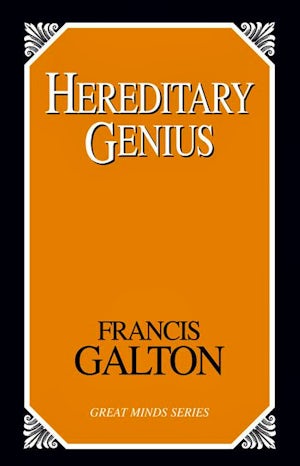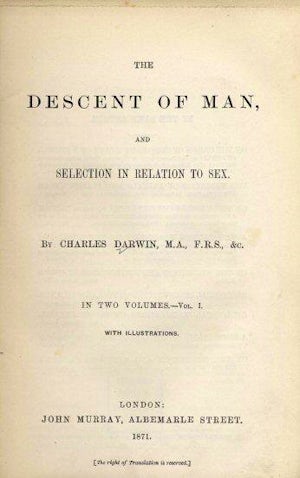1925 - Present. The Annals of Eugenics was founded in 1925 by the Francis Galton Laboratory for National Eugenics at the University of London (Robbins, 2011). The journal was considered quite important, and was initially edited by Karl Pearson, a noted mathematician (Robbins, 2011). Towards the 1950s, after World War II, the journal changed its names to the Annals of Human Genetics, and still exists to its day.
The Annals of Eugenics was meant to be a rigorously scientific journal. Karl Pearson, a noted mathematicia, who pioneered the Chi-Square and P-Value probability statistical tests, was also a protege of Francis Galton (Weiss & Lambert, 2011). In addition to holding the Chair of Eugenics at the University of London, Pearson took on editing the Annals, with Ethel M. Elderton, a woman well-respected for her own scientific research (Weiss & Lambert, 2011). The epigram, "I have no Faith in anything short of actual measurement and the rule of three" was used at the front of the journal by Pearson - it was drawn from Darwin, to reinforce the scientific nature of the journal (Stigler, 2010).
It was important the the journal rely on both science and mathematics - partially because of the methods of investigating genetics relied on such methods (notably Mendelian genetics), but also to distance itself from the appearance of being a softer science, such as anthropology (Weiss & Lambert, 2011). The journal's goal was to "devote its pages wholly to the scientific treatment of racial problems in man" (Annals, 1925 as cited in Vergano, 2011). The paper also sought to provide room for eugenic science to grow (Weiss & Lambert, 2011).
The Annals' first issue was reviewed in Science (Weiss & Lambert, 2011). In general, the Annals had positive reviews, and the journal was identified as both significant and important. The journal was ambitious, and the editors hoped to spread eugenics and create eugenic departments in many Western universities (Weiss & Lambert, 2011). Articles in the paper focused generally on statistical patterns of inherited diseases (Vergano, 2011 ; Weiss & Lambert, 2011), although Pearson contributed papers related to immigration.
After Pearson, R. A. Fisher inherited editorship of the journal in 1934 (Weiss & Lambert, 2011). In 1954, the journal changed editors again, this time to Lionel Penrose, a British psychiatric geneticist (who also occupied the position of the Galton chair at the University of London) (Weiss & Lambert, 2011). Penrose drove many changes for the journal, as he believed eugenics was based on poor foundations (Weiss & Lambert, 2011). He changed the name of the paper upon becoming editor to the Annals of Human Genetics, and the Galton Chair to the Chair of Human Genetics (Weiss & Lambert, 2011). Following this trend, in 1963, the publisher Francis Galton Laboratory for National Eugenics was also renamed to The Galton Laboratory of the Department of Human Genetics and Biometry (Robbins, 2011).
The archives of the Annals from 1925 and 1954 have opened up to researchers (Vergano, 2011), so that better understanding of the historic period can be reached. The journal has been "identified as providing the most relevant significant and useful information of that era to today's researcher" (as cited in Robbins, 2011).
The current journal, Annals of Human Genetics is peer-reviewed, and states its goal "is to increase understanding of the biology of human variation, both in disease and in health" (Annals, 2015). The journal identifies its major topics as: human genome variation, human population genetics, statistical genetics, genetics of common multifactorial diseases and other complex traits, and QTLs and Mendelian disorders and their molecular pathology (Annals, 2015). The paper maintains a large emphasis on data (Annals, 2015).
The journal homepage can be found here.
-Colette Leung
Robbins, M. (2011, February 23). The Annals of Eugenics. The Guardian. Retrieved from: http://www.theguardian.com/science/the-lay-scientist/2011/feb/23/2
Weiss, K. M., & Lambert, B. W. (2011). When the Time Seems Ripe: Eugenics, the Annals, and the subtle persistence of typological thinking. Annals of Human Genetics, 75(3), 334–343. doi:10.1111/j.1469-1809.2010.00611.x
Vergano, D. (2011, April 24). Genetics journal reveals dark past. USA Today. Retrieved from: http://usatoday30.usatoday.com/tech/science/columnist/vergano/2011-04-22-eugenics-journal_N.htm
Stigler, S. M. (2010). Darwin, Galton, and the Statistical Enlightenment. Journal of the Royal Statistical Society: Series A (Statistics in Society), 173(3), 469-482.
Annals of Human Genetics. (2015). Retrieved from: http://onlinelibrary.wiley.com/journal/10.1111/%28ISSN%291469-1809/homepage/ProductInformation.html
 1869:
Galton publishes Hereditary Genius
1869:
Galton publishes Hereditary Genius
 1871:
Charles Darwin publishes The Descent of Man
1871:
Charles Darwin publishes The Descent of Man